While not technically on the coast, my QTH in Central Florida is on a peninsula hanging out into the Atlantic Ocean, and the other end of these QSOs is in a Pacific Palisades costal park in Oregon. I had 2 CW QSOs with Zack, K7FC, who was in the Oregon Coast State Trail park, US-10007, along the coast west of Salem. One was on 15m, the other a few minutes later on 20m. Zach reported the 15m QSO was the stronger one. Distance calculations show that to be 2533 miles, 4076 km, as the radio waves fly. The fun part was making these QSOs using 2-3 watts with a quirky little orange radio.
Every review I’ve read about the (tr)uSDX radio praises how much function is packed into a tiny package. It’s a 5 watt, 5 band, multimode radio developed by 2 hams, DL2MAN and PE1NNZ. Nearly all reviews praise good performance, but complain of poor quality audio and quirky audio behavior. Much of that criticism stems from a miniscule “emergency use only” speaker coupled with a design deficiency which allows unexpected audio overdrive, squeal, in certain situations. I complete the name “Quirky Lil Orange” with that color because mine is housed in a printed case that is indeed very orange.
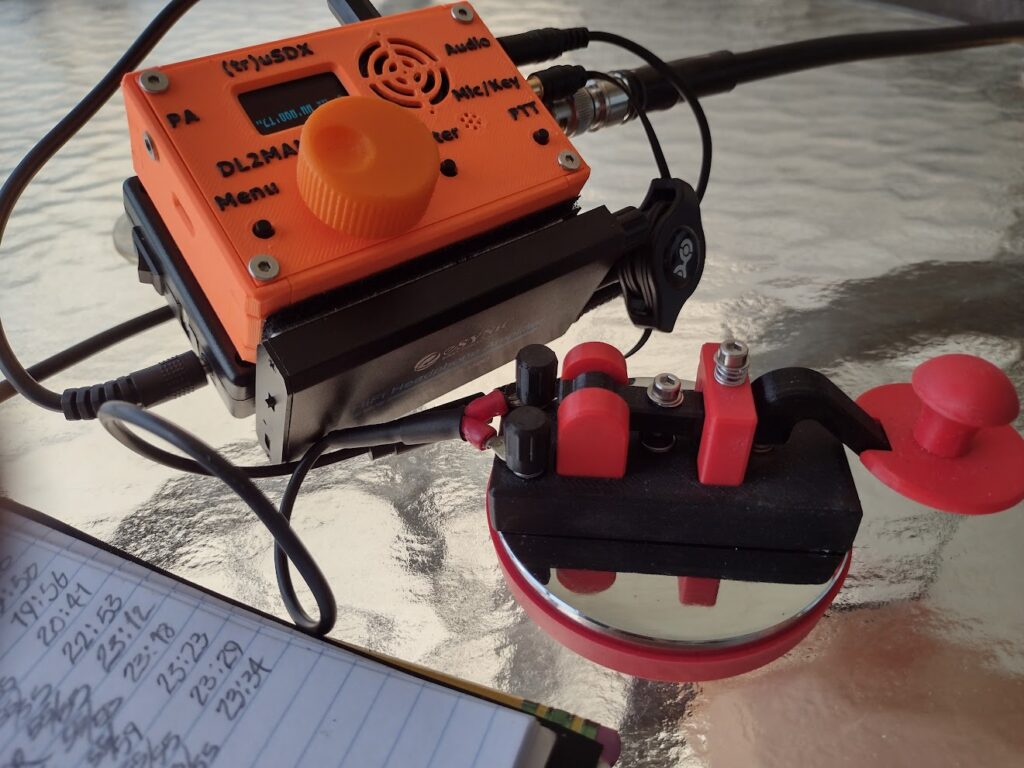
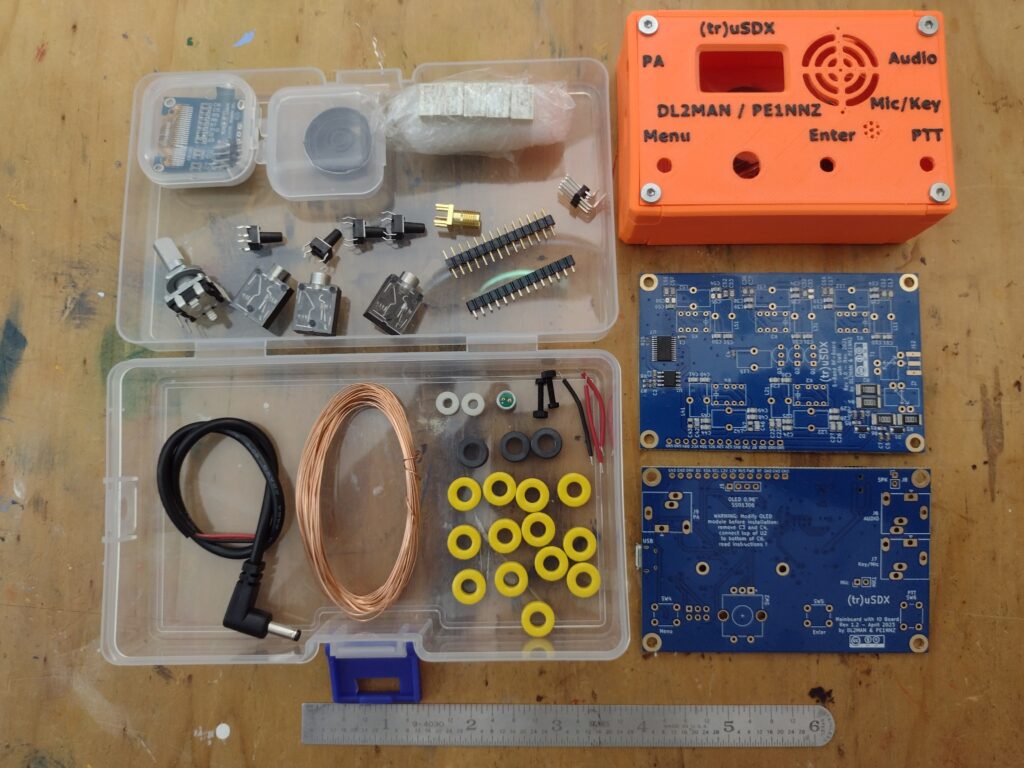
I like building things. So, I built the “High Band” version of the radio which operates on the 20M, 17M, 15M, 12M, 10M bands. Information about the radio warns of lower performance on the higher bands, but they are exactly why I wanted it. Yes, performance / output is lower, in the 2 to 3 watt neighborhood, but experience, like the Oregon QSOs, shows me that sheer power isn’t everything.
Now, about the audio quirks… The squeal monster is uncaged when the audio level is at or above 12 (out of 16). Avoid the problem by staying at or below volume level 12 … and not hearing weak signals. My answer is to use headphones, which is what I prefer anyway. I bump up the volume with an inline eSynic (quirky spelling) headphone amplifier (NOT an affiliate link). For power, I use a Talentcell 12.6v Lithium Ion battery (also NOT an affiliate link). Not liking to string all the parts out in a chain across a table, and since they’re all similar sizes, I used a couple of velcro strips to bundle them together in a sandwich. Neat, and compact. A little stick of nice mahogany held in place with double sided tape makes the kickstand.
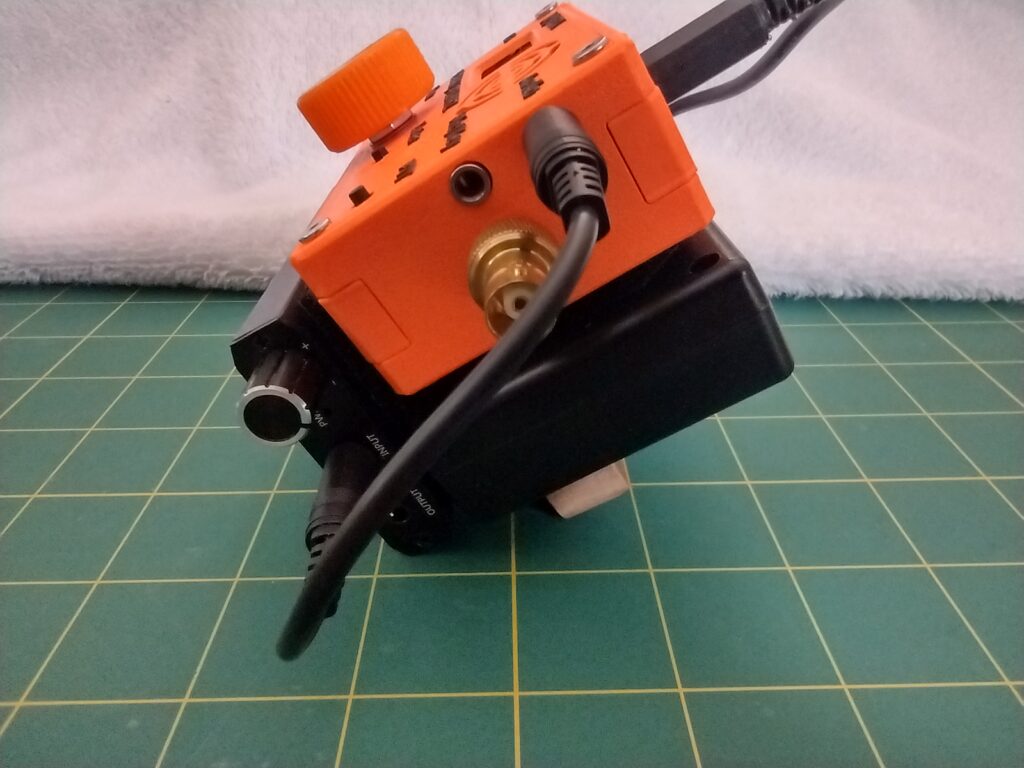
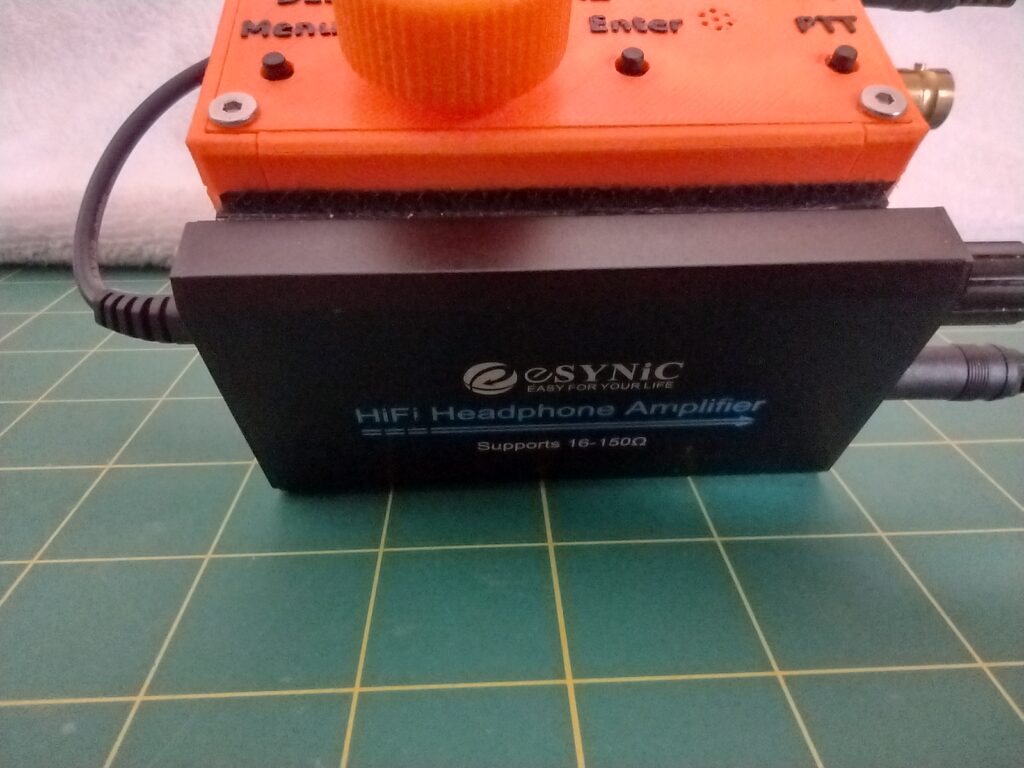
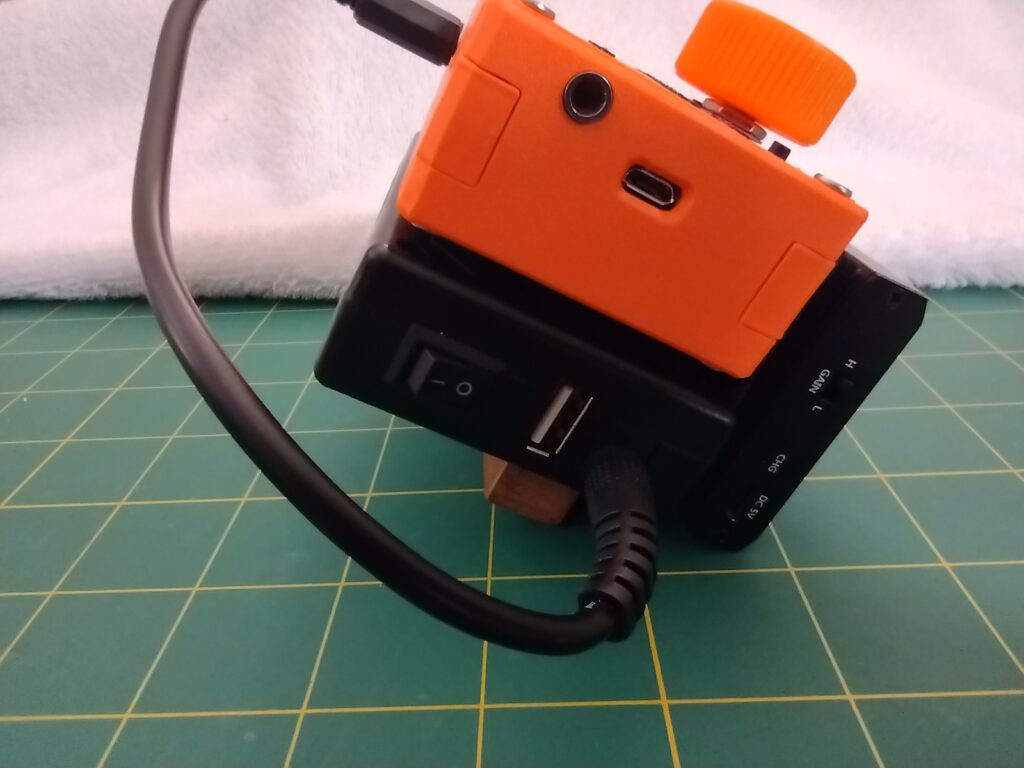
For the record, since the (tr)uSDX offers so many measurements, here are power outputs it reports for the various bands today. As an aside, tedious tweaking of the torroids can offer slight changes.
| 20M | 2.32 watts |
| 17M | 2.31 watts |
| 15M | 3.45 watts |
| 12M | 2.69 watts |
| 10M | 3.65 watts |
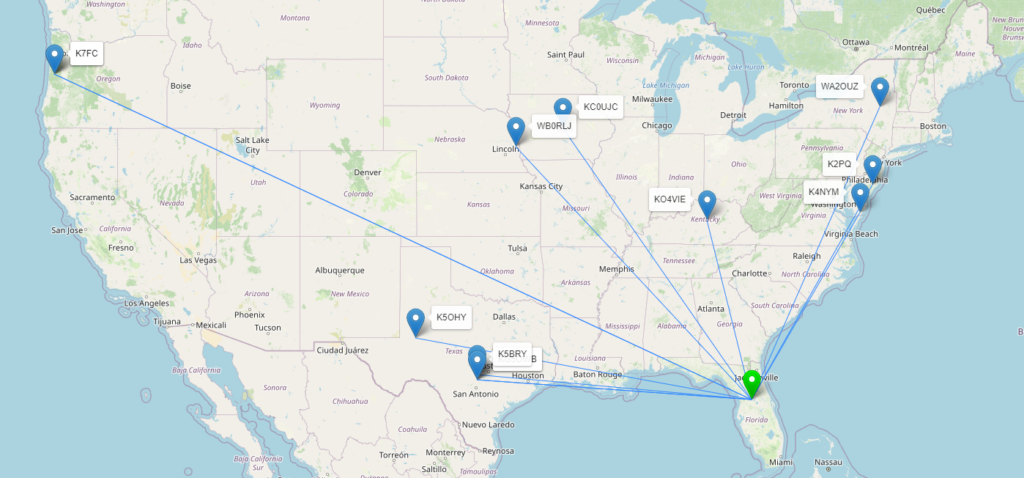
Leave a Reply